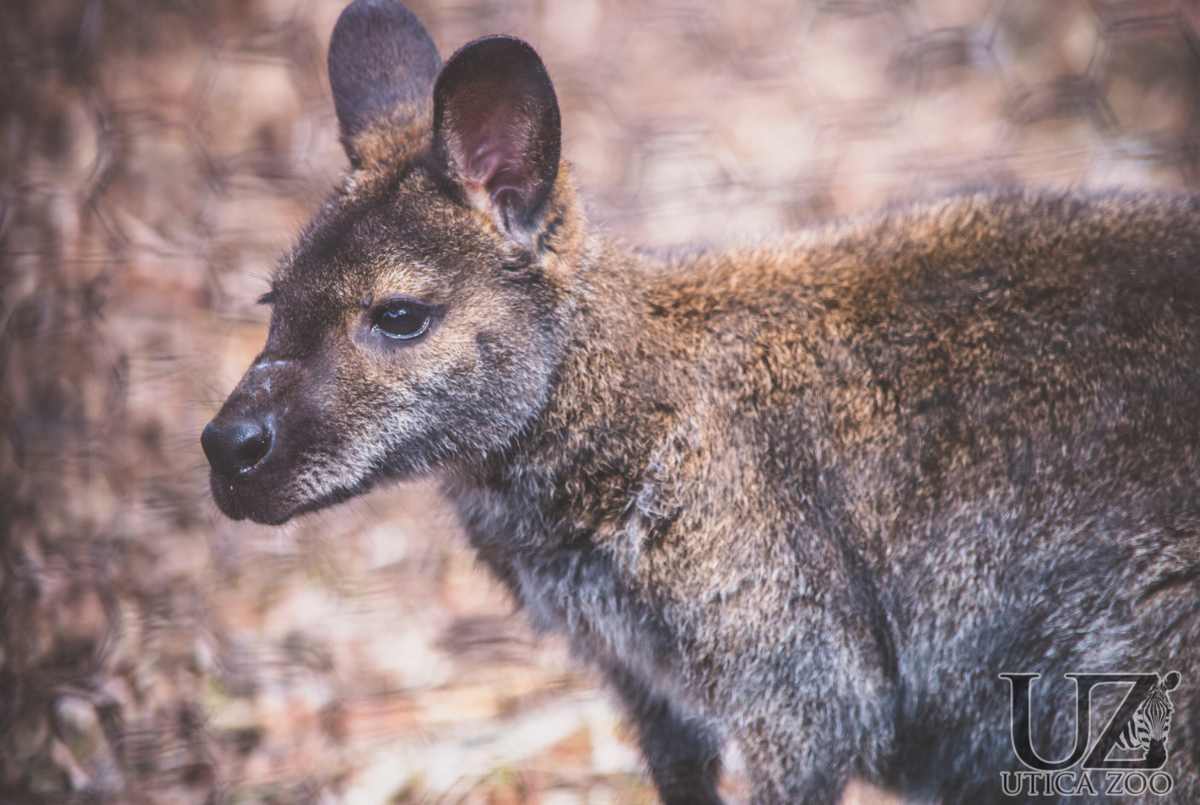Bennett's Wallaby

Basic Information:
Scientific Name: Macropus rufogriseus
Habitat: While naturally located in the temperate and fertile parts of Australia, Bennett’s wallabies have since been introduced to several other countries such as New Zealand, the United Kingdom, Ireland, the Isle of Man, France, and Germany.
Diet: Wallabies typically eat grass, roots, leaves, and weeds.
Size: 3 feet tall / 4 feet long
Weight: 30 to 40 pounds
Lifespan: 5.3 years according to AZA Species Survival Statistics
Distribution Map:
I.U.C.N. Conservation Status:

What does this mean?
Least Concern – a species determined by the International Union for Conservation of Nature (I.U.C.N.) to be pervasive, abundant, and thriving.
Our Bennett's Wallabies:
Chrissy (Female) – Estimated Date of Birth 2011
Peanut (Male) – Estimated Date of Birth January 30, 2020
Sriracha (Female) – Estimated Date of Birth May 13, 2021
Tapioca (Male) – Estimated Date of Birth March 17, 2022
Cheddar (Undetermined) – Estimated Date of Birth February 9, 2023
About Bennett's Wallabies:
Wallabies are a species of small marsupial that are often mistaken for kangaroos. Various types of this animal can be found naturally all across Australia, and due to human introductions they can also be found in New Zealand, Tasmania, and even as far west as Ireland, the United Kingdom, and parts of Europe. Bennett’s wallabies – or red-necked wallabies – are primarily distinguished by their gray-coats with reddish shoulders. They are a mostly independent type of wallaby and only really come together in groups when there is an abundance of resources or when mating. While they do have a few predators around, their populations are relatively unchecked and it has led them to be labeled as pests in some areas. In fact, local governments sometimes issue licenses to kill wallabies in order to prevent them from devastating crops or pastures. Occasionally, wallabies are also harvested for their meat.
Did You Know?!
- A baby wallaby will stay in its mother’s pouch for about 9 months, completely weaning between 10-12 months.
- Wallabies have a chambered stomach which allows them to regurgitate food which is then chewed and swallowed again.
- Wallabies cool off by licking their paws and forearms when they are nervously excited or in hot weather.
- Wallabies have incredible senses of smell and hearing! In fact, Wallabies are capable of rotating their ears up to 180 degrees to hear all around their surroundings in order to stay alert to potential predators.
